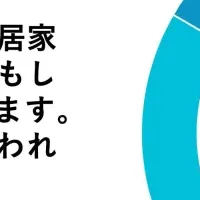
Follicular Lymphoma Market Insights: Forecasting Growth Trends and Key Advancements in Treatment Options
Understanding the Follicular Lymphoma Market Growth
The follicular lymphoma market is poised for considerable growth, projecting a 6% CAGR from 2025 to 2034, supported by advancements in treatment paradigms and greater disease awareness. Follicular lymphoma is a type of slow-progressing B-cell lymphoproliferative disorder, emerging from transformed follicular center B cells. As of 2024, diagnoses in the seven major markets (7MM) have reached around 35,000 cases, impacting both genders equally.
Current Treatment Landscape
The foundational approach to treating follicular lymphoma is well-established, particularly chemoimmunotherapy (CIT), which has demonstrated durability in patient responses. For localized disease, radiotherapy (RT) is often utilized, especially for patients experiencing localized relapses.
Rituximab remains the cornerstone of treatment, holding the largest share both in patient numbers and market revenues. The introduction of rituximab biosimilars has greatly improved accessibility and affordability for patients.
Innovations in Therapy
Recent developments have highlighted critical new entrants in the follicular lymphoma treatment landscape. GAZYVA/GAZYVARO (obinutuzumab), combined with chemotherapy, is now fundamental for many first-line strategies, showing efficacy in both first-time and relapsed patients. Additionally, LUNSUMIO (mosunetuzumab) has been approved and has seized approximately 10% of patients in third-line therapy, with potential for even larger adoption as new lines come into play.
Emerging therapies, such as TAZVERIK (tazemetostat) — an EZH2 inhibitor — are creating precise options for those with specific genetic mutations. The approvals of BRUKINSA (ibrutinib) and CAR T-cell therapies, including KYMRIAH and YESCARTA, further round out the therapeutic options available for clinicians and patients alike.
Clinical Trial Developments
Numerous clinical trials are underway, exploring novel therapies for follicular lymphoma. Innovative drugs like Zilovertamab Vedotin and CALQUENCE (acalabrutinib) are in various clinical phases, indicating a robust development pipeline that will transform treatment possibilities.
Notably, the MONJUVI (tafasitamab) has shown significant promise when combined with lenalidomide and rituximab in enhancing progression-free survival rates, as presented at the ASH Annual Meeting.
Future Outlook
As we look forward to the forecast period from 2024 to 2034, the follicular lymphoma treatment landscape is expected to continue evolving. The increased healthcare expenditure globally, coupled with rising incidence rates, will likely enable the introduction and approval of more effective therapies.
Looking ahead, the US market for follicular lymphoma is projected to escalate from USD 1 billion in 2024, supported by an enhanced focus on patient care and better treatment accessibility. DelveInsight's market insights hint at a sector ripe with potential, with comprehensive analysis revealing crucial opportunities for market players to seize.
The report by DelveInsight delves into country-specific treatment guidelines, patient demographics, and future forecasts essential for understanding the market landscape. Moreover, it includes vital epidemiological data on diagnosed cases, stratified by factors like gender, age, and treatment line.
Conclusion
As clinical research continues to uncover new therapies and treatment modalities for follicular lymphoma, there’s an exciting frontier ahead. The convergence of innovative therapeutic advancements, combined with an expanding market, positions stakeholders to capitalize on the burgeoning growth of the follicular lymphoma market over the next decade.
Topics Health)










【About Using Articles】
You can freely use the title and article content by linking to the page where the article is posted.
※ Images cannot be used.
【About Links】
Links are free to use.